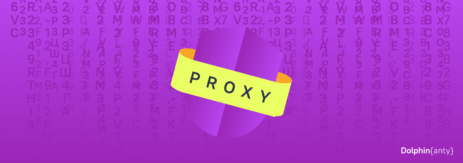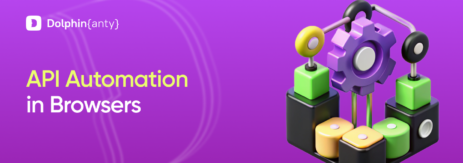What is staking in Crypto and how to earn from it 💸
Blog » What is staking in Crypto and how to earn from it 💸
Users who are just starting to work with cryptocurrencies think that they can earn from crypto only by mining, trading or exchanging currencies.
Today, we’re going to talk about how to make money from cryptocurrency storage — staking.
What is staking 🤔
Staking is a way to earn income from cryptocurrencies that are stored on the Proof of Stake(PoS) algorithm. The bottom line is that you just need to keep crypto-assets in your wallet to make a profit. At the same time, the more coins the user keeps, the higher the chance that he will be able to form a new block and get a reward for it.
PoS algorithm is used for example for TRON, Tezos, Solana, EOS, Cardano, Cosmos and other cryptocurrencies.
How staking differs from mining 💁♀️
Mining works on the Proof of Work(PoS) algorithm. To calculate each block in which information about new transactions will be stored, the miner solve special tasks. Accordingly, the higher the power of a particular miner or pool of miners, the higher the chances that he will be able to calculate the key for the next block — the hash.
In the case of staking, you earn by storing a certain amount of coins and not doing anything with them. The more coins you keep, the higher the chance that you will be the one to create the next block.
Staking doesn’t require calculations to create a new block, that’s why PoS algorithms are faster.
For convenience, we have compiled a table that briefly describes the differences between staking and mining:
| Proof of stake | Proof of work | |
| How new blocks are created in blockchain | By storing coins | Due to the power of the hash rate |
| Who has a higher chance of creating a new block | Who has more coins and stores them for a longer time | More power means higher probability |
| Extra Costs | None | Expenses for rent, equipment, and electricity |
| What kind of technology is needed | No additional technology costs necessary | You need modern and powerful equipment |
Types of staking 🧑🏻🏫
There are three key types of staking:
Locked Staking
In this case, when you place coins, the user immediately indicates for how long he is placing the coins. Here is a good analogy with term deposits: you give money at a fixed rate and get it back after a certain period of time.
The interest depends on the term, amount, and type of coins that are placed for staking. Usually, interest ranges from 2% to 20% per year.
If you withdraw the amount prematurely, as with a bank, you may be deprived of some or all of the accrued interest.
Perpetual Staking
This is a type of staking where you put your money and can withdraw it at any time.
An analogy to perpetual savings accounts is appropriate for this type of staking. You put money in it, earn interest, and you can withdraw all of it at any time. Interest can be paid once a month or more often.
This staking typically has a lower interest, cause of the ability to withdraw funds at anytime.
DeFi-staking
This is a format of staking in which you make some kind of transaction with the help of a third party: crediting users, insuring, etc. Such transactions are made with the help of smart contracts.
In this case, you usually give your money to the platform to dispose of it as it sees. In return, it may promise you a fixed or a dynamic amount of earnings, depending on the total amount invested.
The main reason Defi-staking attracts users: high returns. For example, if on locked and perpetual staking the interest typically fluctuates in the range of 10-30%, in Defi-staking it can be hundreds of percent per annum.
What affects the profitability of staking ☝️
Staking terms depend on a number of factors:
- The type of staking: fixed, perpetual or Defi-staking;
- Where the funds will be stored. For example, interest of 200-300% per annum is more common on Defi-staking platforms. Such terms are associated with risk: potential account hacks, unreliability of the custodian, etc.;
- What cryptocurrency is placed;
- How much you want to invest;
- Your identity. The assessment is similar to how banks analyze their customers. Crypto exchanges can look at the blockchain, how and when you made transactions, so they can build a model of your behavior: whether you tend to keep assets for a long time or you deposit, then withdraw them quickly, etc.
What are the risks of staking crypto
Staking is a good tool to increase your assets, but it is always important to consider the risks of volatility and falling demand.
Because of the volatility, long-term investments can pose risks. For example, while in fiat currencies the planning horizon can be 5-10 years, with cryptocurrencies it can be up to 6 months, subject to regular strategy adjustments.
Moreover, the case of Tether (USDT) is a proof of that: recently this stablecoin was going down to $0.95, though according to developers’ assurances that Tether is secured by US dollars at 1 to 1 ratio.
Which crypto exchanges have staking 📊
Below, we have collected examples of exchanges that are often used for staking:
Binance
This is one of the most reliable exchanges with a high level of service and security. Locked and Defi-staking are now available on the platform. It is significant to consider that due to its great influence, Binance may not always make decisions in favor of its customers.
For example, in 2022, Russian users who stored more than $10,000 on the exchange faced a restriction of functions: they were prohibited from making any transactions other than withdrawals.
Coinbase
Another popular and proven platform. However, Russian users face difficulties in working with it due to the restrictions introduced in 2022. If it is crucial for you to work with this service, you will need an anti-detect browser. More on that below.
aSTAKE.IO
Relatively new project which offers users attractive conditions for investment. The minimum amount of investment starts from $15.
Crypto.com
Similar to Binance, this platform requires identification of your identity (KYC). Moreover, in the case of transactions at this exchange will be charged a commission for each transfer. If all these points do not scare you, in the rest this is a convenient and reliable platform, which has a lot of tools for income.
AQRu
The platform works with both whole teams and individual users. At the time of publication of this article, the maximum interest the platform gives: 7% per year. At the same time, you can earn not only on staking, but also on the transactions themselves with cryptocurrencies through the application.
eToro
This is a platform from Israel that is gaining popularity among users. In addition to the possibility of staking, the platform in principle has an attractive bonus program for regular traders and users.
The key drawback of the exchange is that only U.S. dollars are available on it out of fiat money.
How does staking works on Binance 🚧
The platform now offers two options for staking:
Locked staking on Binance
This is a fixed-term staking with a fixed amount of payouts. To use this kind of staking on Binance, you need to select the currency, the term, and click “Add assets”.
After that, the amount will not appear on the spot wallet for a specified period of time. In case of early withdrawal, you may lose interest, so it is better to transfer funds for a shorter term and then extend them.
DeFI-staking on Binance
In this case, Binance acts as a notional “fund”, which on your behalf manages your allocated funds and implements them into selected projects. Further profit from investments is distributed among all participants, depending on the amount of investment.
More detailed information about Defi-staking on Binance should be read when selecting a specific token and investment plan.
The best cryptocurrencies for staking 😏
The choice of a coin largely depends on your investment strategy, financial capabilities, and for how long you are willing to invest the currencies. For example, for some cryptocurrencies, there is a requirement to invest at least a certain amount. Because of this, it can be a limitation for a number of users.
Below, we’ve collected the cryptocurrencies that users use most often for staking:
⚡️Ethereum
Ethereum or Ether is one of the most popular cryptocurrencies. Popular exchanges often offer up to 15% for staking this cryptocurrency, in some cases the amount can be higher.
⚡️Cardano
Since its introduction, this cryptocurrency has already increased in value almost 4.5 times. The yield is usually up to 12% per annum.
⚡️Tezos
The cryptocurrency is distributed on various exchanges and is notable for its democratic nature. According to assurances of developers, it is investors and users who participate in the staking that decide the fate of the project and make key decisions on the development.
The yield of this cryptocurrency is about 5-6% per annum.
⚡️Solana
One of the most popular and growing cryptocurrencies right now. The exchanges offer about 7-10% for staking this cryptocurrency.
⚡️Polygon
Another fast-growing currency, which in the last year brought its users at least +350% per annum.
⚡️Algorand
The cryptocurrency is interesting because it works on a special algorithm — Pure Proof of Stake. Its peculiarity is that before the creation of a new block, the user is chosen at random.
In terms of profitability, on this cryptocurrency, you can get up to 10% per annum.
Why do you need the anti-detect browser for staking❗️
For cryptocurrency users, an anti-detect browser — a special program for digital fingerprint spoofing — can solve a lot of problems:
Protect data
With the increasing number of online payments including cryptocurrencies, the number of cyber-fraud cases is constantly growing. The anti-detect browser can securely protect your computer, location, and browser data (your fingerprints) to prevent fraudsters from figuring out who you are and gaining access to your assets through a vulnerable network.
Multi-accounting
In order to actively work with a particular exchange, users periodically create multiple accounts on the same platform. It is sometimes necessary:
- for security purposes
- to participate in sales, for example, on Coinlist
- to work with accounts from different countries, etc.
If you use the same device for different accounts, anti-fraud systems will see that the same person is trying to impersonate different people, which is prohibited by the rules of cryptocurrency exchanges and platforms. As a result, all your accounts can be banned at once.
The anti-detect browser will be able to protect you from these problems. Moreover, if you don’t need many accounts, you can use one of the best anti-detect browsers at the moment, Dolphin{anty}, for free. The only limitation of the free subscription plan: you can have not more than 10 browser accounts simultaneously. You can’t share your accounts with other users.
👉🏼Read more about the benefits of anti-detection in our article: how the anti-detect browser can help with cryptocurrency.










